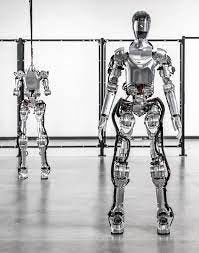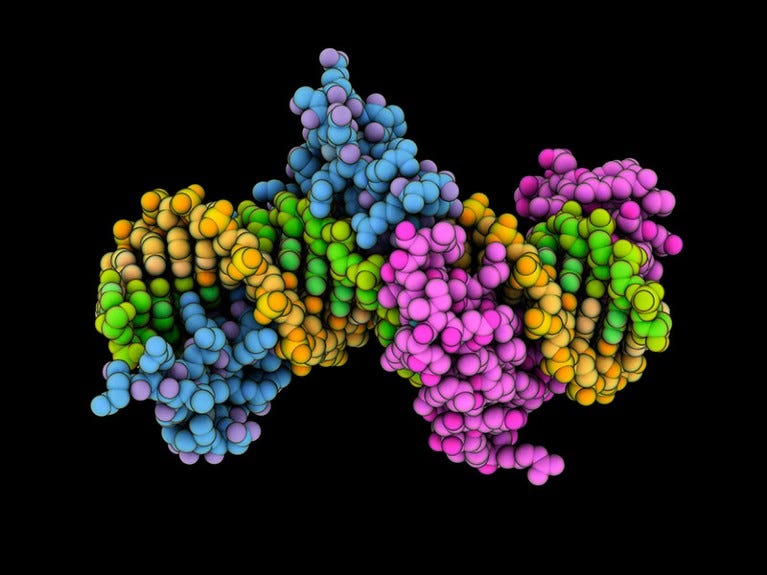

Weekly Dose of Optimism #83
source link: https://www.notboring.co/p/weekly-dose-of-optimism-83
Go to the source link to view the article. You can view the picture content, updated content and better typesetting reading experience. If the link is broken, please click the button below to view the snapshot at that time.

Weekly Dose of Optimism #83
Bipartisan Nuclear, Figure, Astro Mechanica, Sperm Talk, Epigentic Editing
Hi friends 👋,
Happy Friday and welcome back to our 83rd Weekly Dose of Optimism. I spent the first half of the week down in Austin, TX working out outside, hanging with some fellas, and eating tacos. Tremendous vibes. But the good vibes we’re not limited to my Austinian retreat. People have been accomplishing big things all over the country.
Let’s get to it.
Today’s Not Boring is brought to you by…Pilot
Are you a founder who spends far too much time on bookkeeping or taxes?
Pilot is an accounting firm specifically built for the unique needs of startups, so you never have to waste time on accounting again. Pilot provides accounting, CFO, and tax services that are designed with flexibility and scalability in mind.
At this point, if you’re any early stage startup and you’re not using something like Pilot it’s actually negative signal for investors. It means you’re not focused on the right things.
Pilot works with all types of companies from pre-revenue to the likes of OpenAI, Scale AI, and Airtable. If those guys can use them, you probably can too. Not Boring readers can get 20% off their first 6 months from Pilot.
(1) House approves bipartisan bill aimed at bolstering nuclear energy
Rachel Frazin for The Hill
“The Atomic Energy Advancement Act restores American leadership in nuclear energy and technology which is critical to our economic and national security. I’m proud to lead the most significant update to nuclear energy policy in the United States in over a generation,” Duncan said in a written statement on its passage.
On Wednesday evening, the House approved a bipartisan bill aimed at bolstering the United States’ position in nuclear energy. The Atomic Energy Advancement Act is the U.S.’s first major nuclear energy policy update in over a generation. Like any major bill, there’s a ton going on in it, but at it’s core it accomplishes a few things.
Efficient and Predictable Licensing: Less red tape. Faster timelines. Streamlined reviews. More building. Love to see it.
Advanced Nuclear Technologies: Accepting and supporting new advanced designed in nuclear that are safer and more efficient. In addition, the bill aims to modernize the NRC, particularly in the context of advanced nuclear technologies.
Taken together, this Act enhance the United States' competitiveness in the global nuclear energy market and maintains our leadership position in nuclear. So a special shoutout to representative Jeff Duncan (the handsome fellow in the image above) for introducing this bill and getting it passed. Jeff, come on the pod man!
(2) Figure rides the humanoid robot hype wave to $2.6B valuation
Brian Heater for TechCrunch
The Bay Area-based robotics firm announced a $675 million. The Series B values the startup at $2.6 billion post-money. The lineup of investors is equally impressive. It includes Microsoft, OpenAI Startup Fund, Nvidia, Amazon Industrial Innovation Fund, Jeff Bezos (through Bezos Expeditions), Parkway Venture Capital, Intel Capital, Align Ventures and ARK Invest.
We’ve written about Figure a few times over the past year, so we were pumped to see the company announce its $675M Series B from about as heavy-hitting of an investor group as you can imagine. Bezos. Altman. Huang. Pretty tough to beat that trio right now. Figure’s mission is to expand human capabilities through advanced AI and robotics and they’re planning on deploying autonomous humanoid robots to fill gaps in the labor economy. Given the massive Series B, you’d have to imagine we’re at most a few years out from Future starting to deploy these shiny fellas at real scale.
The company also announced a partnership with OpenAI to develop next generation models for humanoid robots. Figure founder Brett Adcock called his humanoid robot “the ultimate deployment vector for AGI.” The genius robots are coming.
The goal is abundance. And robots will play a crucial role in achieving that goal over the coming years. Whether it’s humanoids like Figure or smart business models like Formic’s, we’re going to see robots creatively destroying a lot of the ways of doing things we’re accustomed to. That’s a good thing. We’ll have more time to do things that aren’t working in a warehouse, or cleaning bathrooms, or collecting trash.
(3) The World's First Electric-Adaptive Jet Engine | Ian Brooke, Astro Mechanica
Christian Kyle for First Principles
Friend of the newsletter Christian Keil dropped the first episode of his new Youtube series First Principles. In this episode, he sits down with Ian Brooke, the founder of Astro Mechanica.
Astro Mechanica has invented a new kind of jet engine. That’s a mic drop of a statement.
AM’s jet engine, unlike any existing engine, is efficient at every speed. That unlocks a bunch of new and interesting use-cases. According to Ian, the first use-case will be using the engine to get payloads to orbit dramatically cheaper than today’s existing all-rocket systems. The way this would work is you take off from a runway, drop a payload, and then that payload launches itself into orbit. That second piece — the payload launching itself into orbit — could be made possible by Astro Mechanica’s electric-adaptive jet engine.
Watch the whole video. Christian is so obviously enthusiastic about making these videos and Ian was just so obviously put on this earth to build things like an entirely new jet-engine. Fun to watch.
But wait, there’s more! Check out:
Ian’s tweet with a video of an older version of the engine, which got 5.5M views
Andrew Côté’s thread explaining the jet engine, business model, and how AM will deliver commercial flight 3x faster than anything that exists and beat Boeing
(4) How First Contact with Whale Civilization Could Unfold
Ross Andersen for The Atlantic
Project CETI’s scientists will need to observe the whales for years and achieve fundamental breakthroughs in AI. But if they’re successful, humans could be able to initiate a conversation with whales. This would be a first-contact scenario involving two species that have lived side by side for ages. I wanted to imagine how it could unfold.
Kevin Kelly’s post on X brought this Atlantic story to our attention. The gist of the story is that we’re getting pretty darn close to being able to communicate with animals. And the first animal we’ll likely be able to communicate with is the whale. The sperm whale to be specific. All of this this is, in large part, due to advancements in AI-based acoustic analysis.
An interesting future to imagine is one in which we’re able to communicate with all animals, but at varying levels of clarity. I imagine whales and dolphins and dogs will all have things to say worth listening to. And I also imagine there’ll be a whole slew of animals that have much to say, but not much to say worth listening to. But either way, we’ll have tens of billions of new stakeholders — each with their own voice — and that will surely bring new ethical conundrums and chaos. Don’t get me wrong, I’m here for it, but it just might get noisy.
(5) ‘Epigenetic’ editing cuts cholesterol in mice
Heidi Ledford for Nature
An alternative to genome editing can reduce the activity of a gene that affects cholesterol levels without changing the DNA sequence — and does so for an extended period, according to a study1 in mice. Scientists achieved this effect by changing each animal’s ‘epigenome’, one feature of which is a collection of chemical tags that are bound to DNA and affect gene activity.
Anotha one in gene editing. Last week we covered MEGA-CRISPR, a new methodology that edits RNA instead of DNA, which reduces the risk of permanent genetic changes. This week we have another alternative to CRISPR called “epigenetic editing.” Epigenetic editing is a technique that modifies the chemical tags on DNA, affecting gene activity without altering the DNA sequence itself. Like MEGA, epigenetic editing avoids some of the risks associated with traditional CRISPR gene editing and is part of a larger wave of non-invasive gene therapy methods. You don’t want to make unintended and permanent changes to your DNA structure, and things like epigenetic editing can help avoid that.
Alright, shifting from DNA to DND for now. That’s all for this week.
If you have some time this weekend, check out Pilot.
We’ll be back in your inbox on Tuesday.
Thanks for reading,
Dan + Packy
Recommend
About Joyk
Aggregate valuable and interesting links.
Joyk means Joy of geeK





